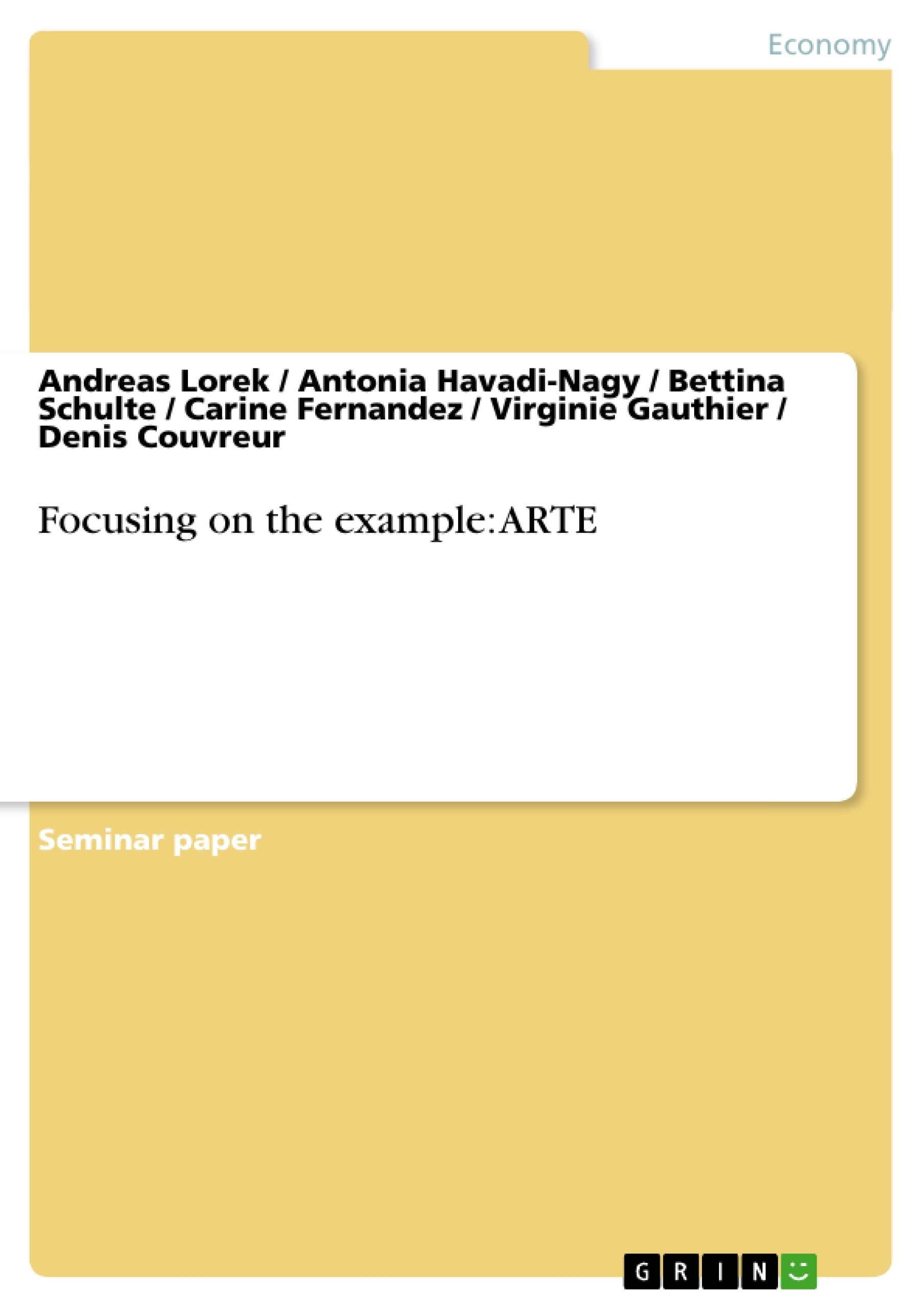Due to our group members, we were not only searching for an
organisation, which is present in France and Germany, no – we were
searching for an organisation with a Franco German identity. Besides,
ARTE, as a European Cultural Channel, does not only focus on crosscultural
communication and management within France and Germany,
but also within the whole of Europe.
But choosing ARTE made us deal with quite a few challenges, as
ARTE is an organisation consisting of complexity and sophisticated
structures. Therefore we divided our work in four parts in order to make
it as understandable as possible: First, we will introduce the
organisation by giving a comprehensive overview, particularly focusing
on the history and the different steps of development. After the second
part, the theoretical frame, we will use the third detailed part to analyse
the organisation ARTE using the knowledge of the given theory. The
fourth part will deal with several problems ARTE has to face with and
possible advices connected with the conclusion.
Inhaltsverzeichnis (Table of Contents)
- WHY ARTE?
- TV WITHOUT LIMITS!
- ARTE-A HISTORY!
- Historical introduction:
- THEORETICAL FRAME.
- RIGHT OF EXISTENCE...
- THE STRUCTURE.
- LIVEABILITY
- MANAGEMENT.
- THE ANALYSIS.
- THE RIGHT OF EXISTENCE...
- STRUCTURE
- LIVEABILITY
- MANAGERS AND DECISIONS.
- CONCLUSION
Zielsetzung und Themenschwerpunkte (Objectives and Key Themes)
This paper aims to provide a comprehensive analysis of ARTE, a European Cultural Channel, focusing on its history, structure, and management. The study explores the organization’s right of existence, its unique structure, and its approach to liveability and management.
- Franco-German cultural identity and European cooperation
- The development and evolution of ARTE as a cultural channel
- Analysis of ARTE's structure and organizational design
- Management practices and decision-making processes within ARTE
- Challenges faced by ARTE and potential solutions
Zusammenfassung der Kapitel (Chapter Summaries)
The first chapter introduces ARTE, emphasizing its Franco-German identity and European scope. It highlights the challenges associated with analyzing a complex organization like ARTE. The second chapter, "TV Without Limits!", provides a concise overview of ARTE, its mission, and its reach. The third chapter delves into ARTE's history, outlining its development from its inception in 1998 to its current status as a European Cultural Channel.
Schlüsselwörter (Keywords)
ARTE, European Cultural Channel, Franco-German identity, cross-cultural communication, organizational analysis, structure, management, liveability, decision-making, challenges, European integration, cultural programming.
- Arbeit zitieren
- Andreas Lorek (Autor:in), Antonia Havadi-Nagy (Autor:in), Bettina Schulte (Autor:in), Carine Fernandez (Autor:in), Virginie Gauthier (Autor:in), Denis Couvreur (Autor:in), 2002, Focusing on the example: ARTE, München, GRIN Verlag, https://www.grin.com/document/20913



